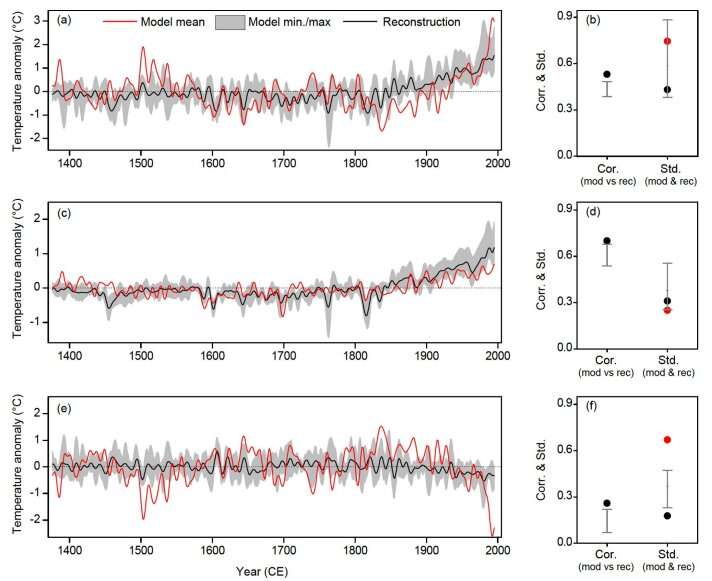This article has been reviewed according to Science X's editorial process and policies. Editors have highlighted the following attributes while ensuring the content's credibility:
fact-checked
peer-reviewed publication
trusted source
proofread
Study: Current weakening of seasonal temperature difference in East Asia is unprecedented in past six centuries

A joint research team led by Prof. Wang Jianglin from the Northwest Institute of Eco-Environment and Resources (NIEER) of the Chinese Academy of Sciences (CAS) has reconstructed East Asian temperature changes in winter and summer as well as their differences during the period 1376–1995 CE using tree ring data with separate sensitivity for seasonal temperatures. The study was published in Science China Earth Sciences on April 20.
Seasonal temperature difference, also referred to as temperature annual cycle, is a dominant feature of climate systems outside the tropics and has important impacts on social and biological systems. Our understanding of seasonal temperature difference, however, is largely hampered by short observational records.
In this study, the researchers analyzed tree ring records across East Asia and identified those that were separately sensitive to winter or summer temperature changes, but not to both. Using the selected seasonal temperature sensitive tree ring records, they reconstructed the difference of summer and winter temperatures over the past six centuries.
They found that the reconstructed seasonal temperature difference of East Asia showed a sustained weakening trend as early as the 1870s, which is largely caused by anthropogenic forcing.
The emergence time of the climate signal in the reconstructed seasonal temperature difference was assessed. "The anthropogenic forcing has already driven the current state of seasonal temperature difference beyond the range of the natural variability since the 1370s," said Prof. Wang Jianglin from NIEER.
"Our study implies a further weakening of seasonal temperature difference in the future as a result of ongoing anthropogenic warming," said Prof. Wang. "This may have important social and ecological implications, e.g., plant phenology and the transmission of seasonal diseases."
More information: Jianglin Wang et al, Recent weakening of seasonal temperature difference in East Asia beyond the historical range of variability since the 14th century, Science China Earth Sciences (2023). DOI: 10.1007/s11430-022-1066-5
Journal information: Science China Earth Sciences
Provided by Chinese Academy of Sciences




















